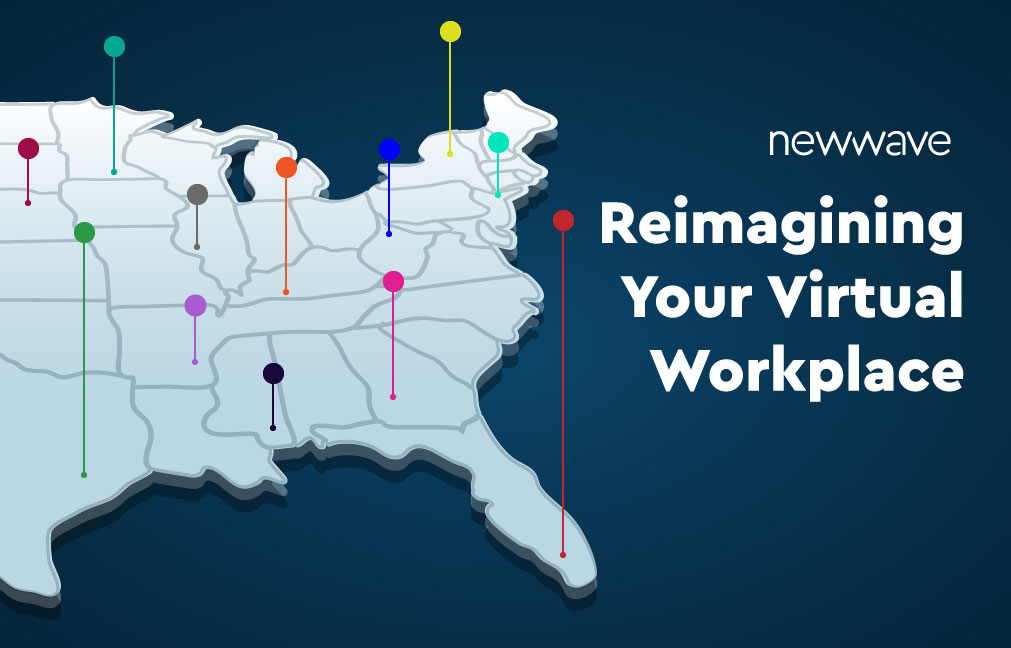Do you remember when team engagement meant congregating together with your co-workers, participating in group activities or games, or maybe something as simple as getting together for a team lunch?
Oh, how times have changed.

In 2020, the global workforce underwent a systemic shift due to the coronavirus. It not only affected the way we conduct business operations, but it also affected the way we conducted our daily lives. Living rooms, bedrooms, and kitchens became home offices, classrooms, and daycares. Every facet of our day-to-day lives was forced to fit inside the confines of our homes. As a result, the time, let alone desire, to engage with our colleagues outside of obligatory meetings became increasingly difficult to manifest.
Companies across the globe scrambled to adjust their business models to reflect the swiftly changing times, implementing work-from-home protocols where possible and enforcing COVID-19 guidelines in unavoidable in-person situations.
Of course, the rise in remote work also meant an increase in virtual meetings. Many of us can attest to having a calendar filled to the brim with unavoidable Zoom invitations. Dashing from video call to video call like a chicken with its head cut off, barely remembering to stop, and take a break for lunch.

For many, this has become everyday life. So, it’s understandable that the last thing team members would want to do is carve out additional time in an already hectic schedule to engage with their colleagues outside of their usual responsibilities. Team engagement may have taken a backseat over the last year, but 2021 is the year to bring it back. Let me tell you why.
Think back to a time when getting up, getting dressed, and driving into work was a part of your normal routine. After arriving at the office, you may have spent time catching up with colleagues while preparing coffee in the breakroom. Or maybe, you had chat with a co-worker passing by as you settled in at your desk. These small interactions are now virtually nonexistent, no pun intended.
Those water-cooler conversations built rapport and formulated informal relationships with the people you spent hours with every day. Now, those conversations are replaced with instant messages and emails which may or may not convey the same conversational tone.
According to a 2021 HubSpot survey, 69% of employees say they’d work harder if they felt better appreciated. It goes without saying that bringing back team engagement is vital to gaining and retaining impactful employees. Furthermore, it sends a message to your industry that your organization is adaptable and able to successfully acclimate to an ever-changing environment.
You may be asking yourself: How do I reimagine my virtual workplace successfully? How do I promote team engagement when virtual fatigue has settled in? Would my team members even participate?
These are all great questions, and the good news is there are plenty of resources to help implement successful team engagements in a virtual environment. The needs of individual organizations and teams may vary, but here are a few key factors that will help your business have a successful engagement, no matter the industry.

Know Your Audience
Understanding your team and the best way to communicate with them is the first step to any successful team engagement. Get creative with your messages and be sure to include incentives for participation. Recent studies show that 14% of adults employed full-time feel overwhelmed at work. Remember, the goal of your team engagement is not to add to your team’s workload. Instead, you want to provide an outlet to decompress and congregate together in a stress-free environment.
Use Your Toolbox
Even before the pandemic, many companies utilized communication platforms such as Microsoft Teams and Slack to communicate instantly. These tools were put into overdrive when many industries turned to their services to fill in the communication gaps created during remote work.
These platforms have valuable add-on features to promote and gamify team engagement in a way that seamlessly integrates with the platforms your team may already be familiar with. For example, you may be familiar with kudos and shout-outs from one colleague to another on a job well done. Platforms like Kazoo implement a rewards system around this experience to encourage peer-to-peer and team recognition further.
Think Outside the Box
Remember, you are not limited to four walls and a desk. The opportunity to get creative has never been more available. Companies with teams spread across the globe have an opportunity to connect with everyone on the same level and foster an environment of connectedness that may not have existed before.
The important thing to remember is that the world is constantly changing. While this past year may have changed quicker than any of us could have predicted, we can learn and grow from our experiences, and make our teams better for it.
The way we conduct business may have evolved, but the people who drive your business forward are still the very heartbeat of what you do. Put your people first, and your business’s success will follow.







